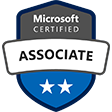
Course Overview:
PenTest+ is an intermediate-level certification for cybersecurity professionals who are tasked with penetration testing to identify, exploit, report, and manage vulnerabilities on a network. PenTest+ is at the same certification level as CT-395: CySA+. Depending on your course of study, PenTest+ and CySA+ can be taken in any order, but typically follow the skills learned in CT-325: Security+. PenTest+ focuses on offense through penetration testing and vulnerability assessment while CySA+ focuses on defense through incident detection and response. The most qualified cybersecurity professionals have both offensive and defensive skills. Attend Tech Now training for hands-on, instructor led course to prepare you for the CompTIA PT0-002 exam. This exam is hands-on, performance-based questions and multiple choice, to ensure each candidate possesses the skills, knowledge, and ability to perform tasks on systems.

What’s Included:
- 5 days of instructor led in classroom training
- Labs
- PenTest+ Courseware
- Exam Voucher
- PenTest+ onsite exam scheduling
Course Objectives:
- Plan and scope penetration tests
- Conduct passive reconnaissance
- Perform non-technical tests to gather information
- Conduct active reconnaissance
- Analyze vulnerabilities
- Penetrate networks
- Exploit host-based vulnerabilities
- Test application
- Complete post-exploit tasks
- Analyze and report pen test results
Dates/Locations:
No Events
Duration: 5 Days
Course Content:
-
- Module 01. Planning and Scoping Penetration Tests
- Module 02. Conducting Passive Reconnaissance
- Module 03. Performing Non-Technical Tests
- Module 04. Conducting Active Reconnaissance
- Module 05. Analyzing Vulnerabilities
- Module 06. Penetrating Networks
- Module 07. Exploiting Host-Based Vulnerabilities
- Module 08. Testing Applications
- Module 09. Completing Post-Exploit Tasks
- Module 10. Analyzing and Reporting Pen Test Results
Prerequisites:
-
-
- CT-225: Network+
- CT-325: Security+
- 3-4 years of hands-on information security or related experience
-
Target Audience:
This course is designed for cybersecurity professionals tasked with penetration testing and vulnerability management.
Comments
Latest comments from students
